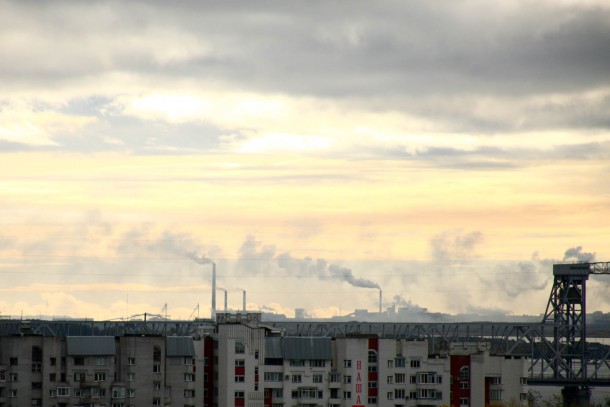04.12.2013 | News

Three environmental pollution sources were excluded from the Barents environmental “hot spots” list today at the Barents Euro-Arctic Council (BEAC) meeting of the ministers of the environment, held in Inari, Finland.
The excluded hot spots relate to the Heat and Power Plant in Archangel, Kondopoga Pulp and Paper Mill in Russian Karelia and the upgraded system for handling mercury-containing wastes in Nenets.
In 2003 NEFCO together with the Arctic Monitoring and Assessment Programme (AMAP) defined a list of environmental hot spots. Hot spots are polluted environmental sites that pose a health risk to those who live near them, either because of direct impacts or the potential to pollute the atmosphere, drinking water or other parts of the food chain.
The 2003 hot spots report pointed out that the lack of a system for handling mercury-containing waste was a serious problem in Nenets Autonomous District. Nenets now has a collection and treatment system for wasted luminescent lamps.
The Arkhangelsk Heat and Power Plant has invested nearly RUB 470 million in converting the fuel source from oil to natural gas. As a result, especially the emissions of acidifying sulphur dioxide and oil ash have decreased remarkably and the plant complies with the maximum allowed pollution levels defined by the Russian authorities. Earlier, almost 45% of the air pollutants of the city of Archangel originated from the heat and power plant.
A shift from fuel oil and coal to natural gas at the Kondopoga pulp and paper combined mill in the Republic of Karelia has resulted in significant reductions of sulphur dioxide and coal ash emissions. Investments worth over RUB 4000 million have brought the plant into compliance with the maximum allowed pollution levels defined by the Russian authorities.
All the improvements at these three hot spots have been made under financing by the companies themselves or with local budgets. In 2003, the Barents Euro-Arctic Council foreign and environment ministers set a target of launching environmental measures at all of the hot spots within 10 years by 2013. The BEAC Working Group on Environment published an assessment report describing the current state of hot spots today at the meeting.
According to the report, certain measures aimed at solving environmental problems have been launched at all 42 hot spots, though not all environmental problems are solved yet. As of 2003 a total of 6 hot spots have now been excluded. The measures at the remaining hot spots differ from elaboration of management plans to modernisation of industry or elimination of waste. The stage of implementation varies — from launched to completed improvements.
“However, a lot of work still remains to be done and investments will be needed at many hot spots before the environmental problems are solved. Special attention and further international cooperation are needed to reduce transboundary impacts to a level that does not harm health and the environment”, says Ville Niinistö, Finland’s Minister of the Environment.
The Consulting Agency Akvaplan-niva AS, Norway, and the System Development Agency, Russia, prepared the assessment report with financing from NEFCO. Moreover, NEFCO has, together with the Finnish Ministry of the Environment and the Barents Euro-Arctic Council, published a brochure highlighting environmental success stories from the Russian Barents Region. NEFCO has observer status in the Barents Euro-Arctic Council and engages actively in the Council’s Working Group on the Environment.
Learn more about the Barents Euro-Arctic Council
Read the brochure “Hot Spots – Tackling environmental challenges in the Barents Region”
Learn more about the Barents Hot Spots Facility